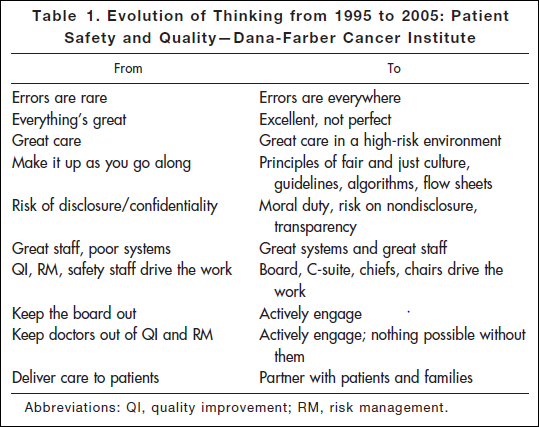February 13th, 2011 by Bryan Vartabedian, M.D. in Opinion, True Stories
No Comments »

 It was sometime in the mid-nineties that parents started showing up in my office with reams of paper. Inkjet printouts of independently unearthed information pulled from AltaVista and Excite. Google didn’t exist. In the earliest days of the Web, information was occasionally leveraged by families as a type of newfound control.
It was sometime in the mid-nineties that parents started showing up in my office with reams of paper. Inkjet printouts of independently unearthed information pulled from AltaVista and Excite. Google didn’t exist. In the earliest days of the Web, information was occasionally leveraged by families as a type of newfound control.
A young father and his inkjet printer
One case sticks clearly in my mind. It was that of a toddler with medically unresponsive acid reflux and chronic lung disease. After following the child for some time, the discussion with the family finally moved to the option of a fundoplication (anti-reflux surgery). On a follow-up visit the father had done his diligence and appeared in the office with a banker box brimming with printed information. He had done his homework and his volume of paper was a credible show of force.
At the time in Houston, the Nissen and Thal fundoplication were the accepted fundoplication procedures in children. Deep from the bottom of one of the boxes, the father produced a freshly-reported method of fundoplication from Germany. He had compared the potential complications with other types of fundoplication and this was the procedure he wanted.
What he didn’t understand was that an experimental technique used on a limited numbers of adults didn’t necessarily represent the best option for his toddler. I gave it everything I had but didn’t get very far. The tenor of his argument was slightly antagonistic. Ultimately there was nothing more I could do. I deferred the remainder of the discussion to one of our best “talking” surgeons, but knew the father wouldn’t get the time and consideration that I had offered.
I never saw the child again. As they say, the father voted with his feet. Read more »
*This blog post was originally published at 33 Charts*
February 9th, 2011 by StevenWilkinsMPH in Opinion, True Stories
No Comments »

Let me start by saying I really like MD Anderson Cancer Center. There is a lot to like. Take their tag line for example: “Making care history.” If anyone finds a cure for this cancer or that cancer, MD Anderson will have a hand in it, I’m sure. Hospitals could also learn a thing or two about the meaning of comprehensive care, clinical integration, and customer service from MD Anderson is well.
I have another reason why I like MD Anderson so well: They saved my wife’s life. You see, she was diagnosed back in November of 2004 with stage four non-small cell lung cancer (NSCLC). As anyone familiar with lung care knows, lung cancer is a very tough adversary. It’s an even tougher adversary when your insurance company insists that your local community hospital and oncologists are “just as good” as MD Anderson’s in terms of quality and outcomes.
You guessed it. In 2004, my wife and I had to fight long and hard to get our insurance carrier to authorize my wife care at MD Anderson, an out of network provider. I’m happy to say we won that fight back in 2004 and again just last week when my wife’s employer’s new insurance carrier refused to authorize her continued care at MD Anderson. You see, her new carrier wanted to rehash the whole medical necessity thing all over again.
Now you would think that a world-class organization like MD Anderson would do everything possible to help prospective patients deal with these kinds of insurance issues. After all, they seem to do everything for you once care is authorized. But you would be wrong. Read more »
*This blog post was originally published at Mind The Gap*
January 21st, 2011 by DavedeBronkart in Health Tips, Opinion
No Comments »

There are several stages in becoming an empowered, engaged, activated patient — a capable, responsible partner in getting good care for yourself, your family, whoever you’re caring for. One ingredient is to know what to expect, so you can tell when things seem right and when they don’t.
Researching a project today, I came across an article* published in 2006: “Key Learning from the Dana-Farber Cancer Institute’s 10-Year Patient Safety Journey.” This table shows the attitude you’ll find in an organization that has realized the challenges of medicine and is dealing with them realistically:

“Errors are everywhere.” “Great care in a high-risk environment.” What kind of attitude is that? It’s accurate.
This work began after the death of Boston Globe health columnist Betsy Lehman. Long-time Bostonians will recall that she was killed in 1994 by an accidental overdose of chemo at Dana-Farber. It shocked us to realize that a savvy patient like her, in one of the best places in the world, could be killed by such an accident. But she was.
Five years later the Institute of Medicine’s report “To Err is Human” documented that such errors are in fact common — 44,000 to 98,000 a year. It hasn’t gotten better: Last November the U.S. Inspector General released new findings that 15,000 Medicare patients are killed in U.S. hospitals every month. That’s one every three minutes. Read more »
*This blog post was originally published at e-Patients.net*
January 19th, 2011 by StevenWilkinsMPH in Better Health Network, Health Tips
2 Comments »

We’ve all been there. It often starts with some kind of recurring pain or dull ache. We don’t know what’s causing the pain or ache. During the light of day we tell ourselves that it’s nothing. But at 3:00am when the pain wakes you, worry sets in: “Maybe I have cancer or heart disease or some other life-ending ailment.” The next day you make an appointment to see your doctor.
So now you’re sitting in the exam room explaining this scenario to your doctor. Based on your previous experience, what’s the first thing your doctor would do?
A. Order a battery of tests and schedule a follow-up appointment.
B. Put you in a patient gown and conduct a thorough physical examination, including asking you detailed questions about your complaint before ordering any tests.
If you answered “A,” you have a lot of company. A recent post by Robert Centor, M.D., reminded me of yet another disturbing trend in the doctor-patient interaction. The post, entitled “Many doctors order tests rather than do a history and physical,” talks about how physicians today rely more on technology for diagnosing patients than their own “hands-on” diagnostic skills — a good patient history and physical exam, for example.
Prior to the technology revolution in medicine over the last 20 years, physician training taught doctors how to diagnose patients using with a comprehensive history and physical exam. More physicians today are practicing “test-centered medicine rather than patient-centered medicine.” Medical schools focus on teaching doctors to “click as many buttons on the computer order set as we possibly can in order to cover every life-threatening diagnosis.” The problem is that medicine is still an imperfect science, and technology is not a good substitute for an experienced, hands-on diagnostician. Read more »
*This blog post was originally published at Mind The Gap*
January 11th, 2011 by admin in Health Tips
1 Comment »
 This is a guest post from Dr. Anita Gupta.
This is a guest post from Dr. Anita Gupta.
**********
How To Have A Pain-Free Hospital Stay
Too often patients feel like they’re in the passenger seat when entering the hospital. Even in the best of circumstances — such as planned admissions — patients often don’t feel in control of their own care.
One of the most unnecessary issues facing patients when they enter the hospital is untreated (or undertreated) pain. Often the focus of the medical team is to treat a condition, and controlling a patient’s pain comes second. Fortunately, this doesn’t need to be the situation. Here are a few tips for patients to ensure that their pain does not go overlooked:
— Let someone know if you are in pain. This may seem obvious, but patients often hesitate to question their doctor. Pain control during your hospital stay is not a luxury, and you need to know you have a right to pain control during your stay. If you doctor or nurse is not answering your questions regarding pain, ask to see pain specialist who will likely address your concerns as well as the concerns of the doctors and nurses taking care of you. Unfortunately when it comes to treating pain, not all doctors are trained equally.
— Have a family member or good friend to act as your advocate. Have this individual get involved in your medical care and act on your behalf during your hospitalization. Read more »
 It was sometime in the mid-nineties that parents started showing up in my office with reams of paper. Inkjet printouts of independently unearthed information pulled from AltaVista and Excite. Google didn’t exist. In the earliest days of the Web, information was occasionally leveraged by families as a type of newfound control.
It was sometime in the mid-nineties that parents started showing up in my office with reams of paper. Inkjet printouts of independently unearthed information pulled from AltaVista and Excite. Google didn’t exist. In the earliest days of the Web, information was occasionally leveraged by families as a type of newfound control.





 This is a guest post from Dr. Anita Gupta.
This is a guest post from Dr. Anita Gupta.







